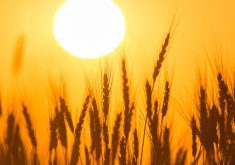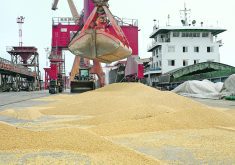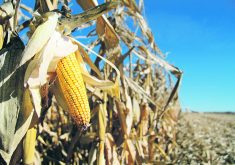ANAHEIM, Calif. — Farmers should not count on Mother Nature to lift grain markets out of the doldrums in 2018, says a weather expert.
Bryce Anderson, DTN’s agricultural chief meteorologist, said the weather cycle will likely move from a weak La Nina phase to a neutral phase by mid-spring and stay that way through summer.
He has studied five years with similar weather patterns — 1963, 2000, 2001, 2006 and 2009.
“Those were years where we really didn’t have that big of a problem overall,” Anderson told farmers attending the 2018 Commodity Classic, an annual gathering of U.S. corn, soybean, wheat and sorghum growers.
Read Also

Pakistan reopens its doors to Canadian canola
Pakistan reopens its doors to Canadian canola after a three-year hiatus.
U.S. corn yields in the first four of those similar years were within one percent of trend line yields. In 2009 they were 6.5 percent above the trend line.
“This year has a good shot to be a decent year and not one that presents a lot of threats,” he said.
The one exception is the U.S. hard red winter wheat crop. Anderson said a “rip-roaring” drought is already happening throughout much of the southern Plains. Many areas have a D3 designation, meaning extreme drought, according to the U.S. Drought Monitor.
He doesn’t see any relief in sight for the winter wheat crop for the next couple of months, which means it will be emerging from dormancy in dry conditions.
Anderson is forecasting a slow start to spring fieldwork in the U.S. Midwest because of cool conditions throughout March and the first half of April.
Above normal precipitation in the eastern Midwest will also hamper seeding. There have already been flash floods in the Ohio Valley.
He anticipates some easing of drought conditions in the eastern half of North Dakota and South Dakota during the summer. He is more hesitant about how much improvement there will be in the western half of those states and Montana.
There will be variable precipitation in the Midwest this summer and near to below normal temperatures, and that temperature forecast is important.
Anderson noted that there were many concerns about dryness last year, with some analysts writing off the crop. However, mild temperatures in August lengthened the fill period for grain because the plants were not under stress and it saved the crop.
“I think we could have that again this year,” he said.
That is one of the reasons why he is optimistic about achieving trend line yields, although he is uncertain about having the fifth year in a row of above trend yields for corn and soybeans.
Anderson also expects a slow start to spring fieldwork in the Canadian Prairies this year and is worried that the dryness in the southern Prairies could linger.
“I am concerned that they’re going to have a little bit of a challenge in working out of that as the season goes on,” he said.
Frequent rain means big crops in Brazil. Forecasts call for 110 to 112 million tonnes of soybeans and 88 million tonnes of corn.
It’s a different story in Argentina, where La Nina has been wreaking havoc.
“This is the driest that Argentina has been in 10 years,” he said.
Forecasts are for 39 to 42 million tonnes of soybeans and 31 to 33 million tonnes of corn. The soybean estimate is one-third less than it was Jan. 1.
There is good snow cover for Russia’s winter wheat crop and favourable soil moisture in both Russia and Ukraine for their spring crops.
China is a little dry in the northeast, where they grow soybeans, but it is not a big threat yet.















